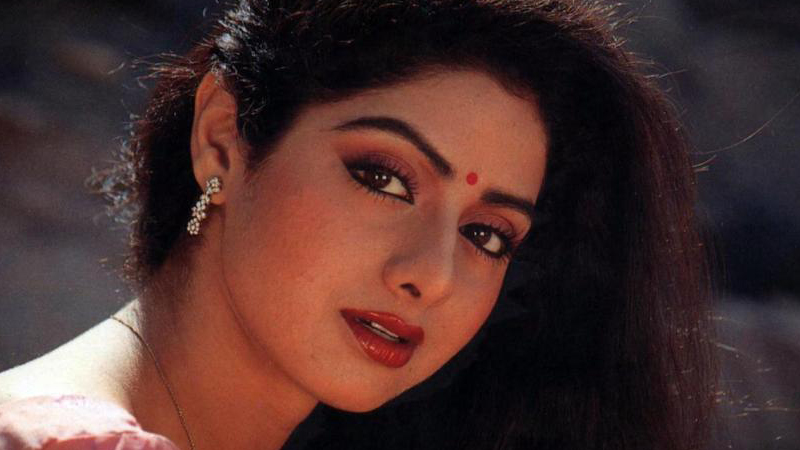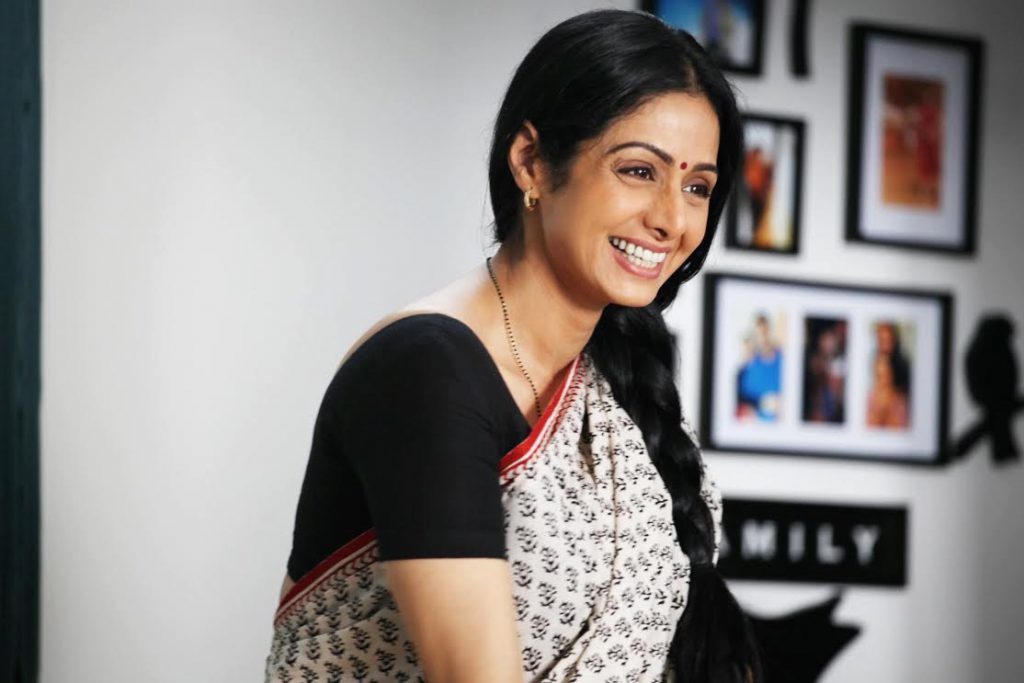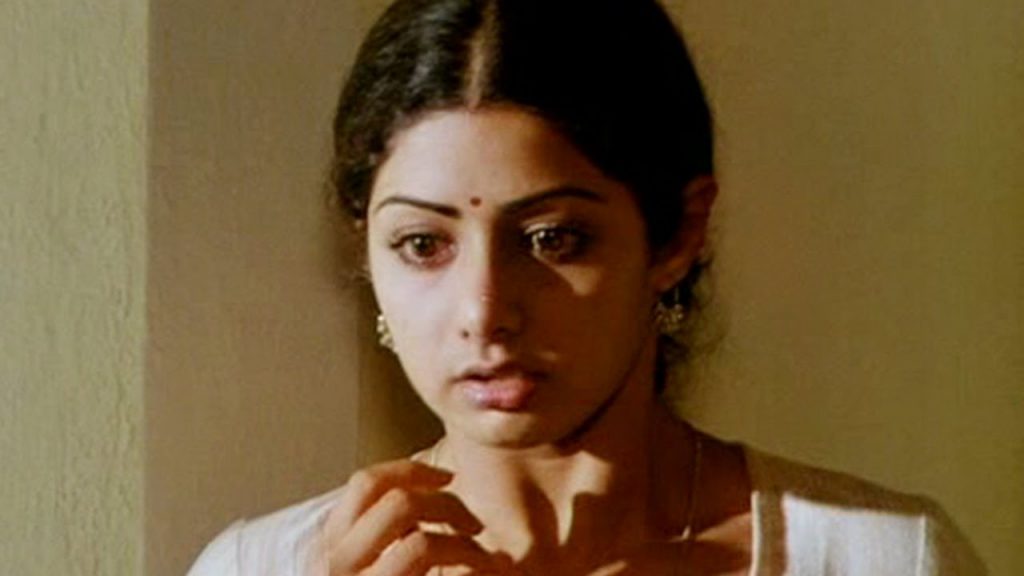
Whether one was a fan of her work or not, it was hard to ignore the magnetism of Sridevi’s screen presence. Her sudden demise on February 24 has left the country reeling in shock. In an attempt to ascertain the cause of her death, many media houses, however, have been enjoying a field day in promulgating conspiracy theories about the legendary actor’s death. Instead of mourning the ill-timed and unfortunate end of an iconic chapter in cinematic history and, more importantly, respecting the deceased, the narrative has taken the tone of a salacious gossip column about her fiercely guarded private life.

A Still from ‘English Vinglish’; Image: sify.com
Before paying any tribute, let us bear in mind a few important details. Sridevi was a prolific performer from a non-cinematic background with a career spanning half a century and three hundred films. She rose to stardom in the 1980s — a decade that basked in the glorified residues of Bollywood’s ‘Angry Young Man’ phase — to become India’s first female superstar. Newcomers these days are able to stay in the limelight with the help of fashionable social media posts and thus become a brand unto themselves, but Sridevi became the most sought after actor of her time when Insta-privilege was an alien concept, earning even more than Rajinikanth. In other words, Sridevi was a self-made juggernaut who relied entirely on her own immeasurable talent to stay relevant. She went on a fifteen-year hiatus, briefly punctuated by a TV show, to raise her children with producer Boney Kapoor, and was gearing up for the debut of her elder daughter, Janhvi, in July this year.

A Still from ‘Sadma’; Image: youtube.com
Born to a Tamil father and Telugu mother on August 13, 1963, Shree Amma Yanger Ayyapan started out as a child artist in 1967’s Kandan Karunai, and bagged her first lead role in M.A. Thirumugam’s Thunaivan, all at the tender age of four. After working in a series of Tamil, Telugu, Malayalam, and Kannada films, she made her Hindi film debut in 1972 with Rani Mera Naam, and at thirteen, essayed her first adult character in the 1976 Tamil film, Moondru Mudichu, opposite Kamal Haasan and Rajinikanth. The trio starred in several films together, 16 Vayathinile by P. Bharathiraja being one of the most influential of those. Sridevi’s role as Mayil, a 16-year-old village belle who gives up her ambition for love, won her a Filmfare Special Award — South, and she was cast in the same role again for the film’s Telugu and Hindi remakes.
The year 1983 brought her nation-wide attention with the release of Himmatwala, and remakes of two of her South Indian films — Sadma and Mawaali. Balu Mahendra’s Sadma saw Sridevi playing an amnesiac woman who gradually regresses to childhood. While the Hindi remake did not do well commercially, her performance was lauded by critics, members of the film fraternity, and fans as one of the finest in Indian film history. The 1982 Tamil version earned her a Tamil Nadu State Film Award for Best Actress.
After being paired opposite Kamal Haasan and Rajinikanth in several Tamil films, Bollywood made the most of her electric dance performances with Jeetendra, and her chemistry with Anil Kapoor. The latter resulted in Shekhar Kapur’s cult hit Mr. India which is best remembered for Sridevi’s goofy journalist character, Seema Soni, who goes from Chaplinesque vaudeville to shimmying to ‘Hawa Hawai’ and sensually crooning ‘I Love You’ in the rain. She bested her own comic timing in the 1989 blockbuster ChaalBaaz, where her double role of twins, Anju and Manju, overpowered her co-stars, Sunny Deol and Rajinikanth, and won her her first Filmfare Award for Best Actress.

A Still from ‘Chandni’; Image: ibgnews.com
She worked with ace director Yash Chopra on two films: Chandni, marking the first time Sridevi dubbed for a Hindi-speaking role; and a double role in Lamhe, with Anil Kapoor, earning her a second Filmfare Award for Best Actress. With Ram Gopal Varma’s Kshana Kshanam (1991), she garnered further awards and accolades from the Telugu film industry. Khuda Gawah, Gumraah, Laadla, Devaraagam, and many other hits followed, until she married Boney Kapoor in 1996. Her last film prior to motherhood, Judaai, had her play an avaricious woman who sells her husband in return for riches. In spite of the ridiculous-sounding plot, Sridevi owned the film with her riveting performance as a money-minded wife.
Between Judaai and her stellar return to the big screen in Gauri Shinde’s English Vinglish (2012), Sridevi experimented with the small screen format with the comedy series Malini Iyer (2004-05) on Sahara One, playing a Tam-Bram wife trying to adjust in a Punjabi family. Never one to shy away from defying conventions, her last two outings further explored her range: in the Tamil fantasy film Puli (2015), she played an evil sorceress, and in 2017’s Mom gave the audiences a vengeful mother seeking justice for her daughter’s rape. She will be seen in a posthumous cameo in Shah Rukh Khan-starrer Zero later this year.
Sridevi’s contribution to Indian cinema across five languages was priceless. With such an illustrious legacy, it was only befitting for her to have received last rites with state honours. Chandni may be gone, but her extraordinary performances — ranging from feisty to bubbly — will live on in the hearts of her admirers forever.
Featured Image Courtesy: allegationcorner.com

